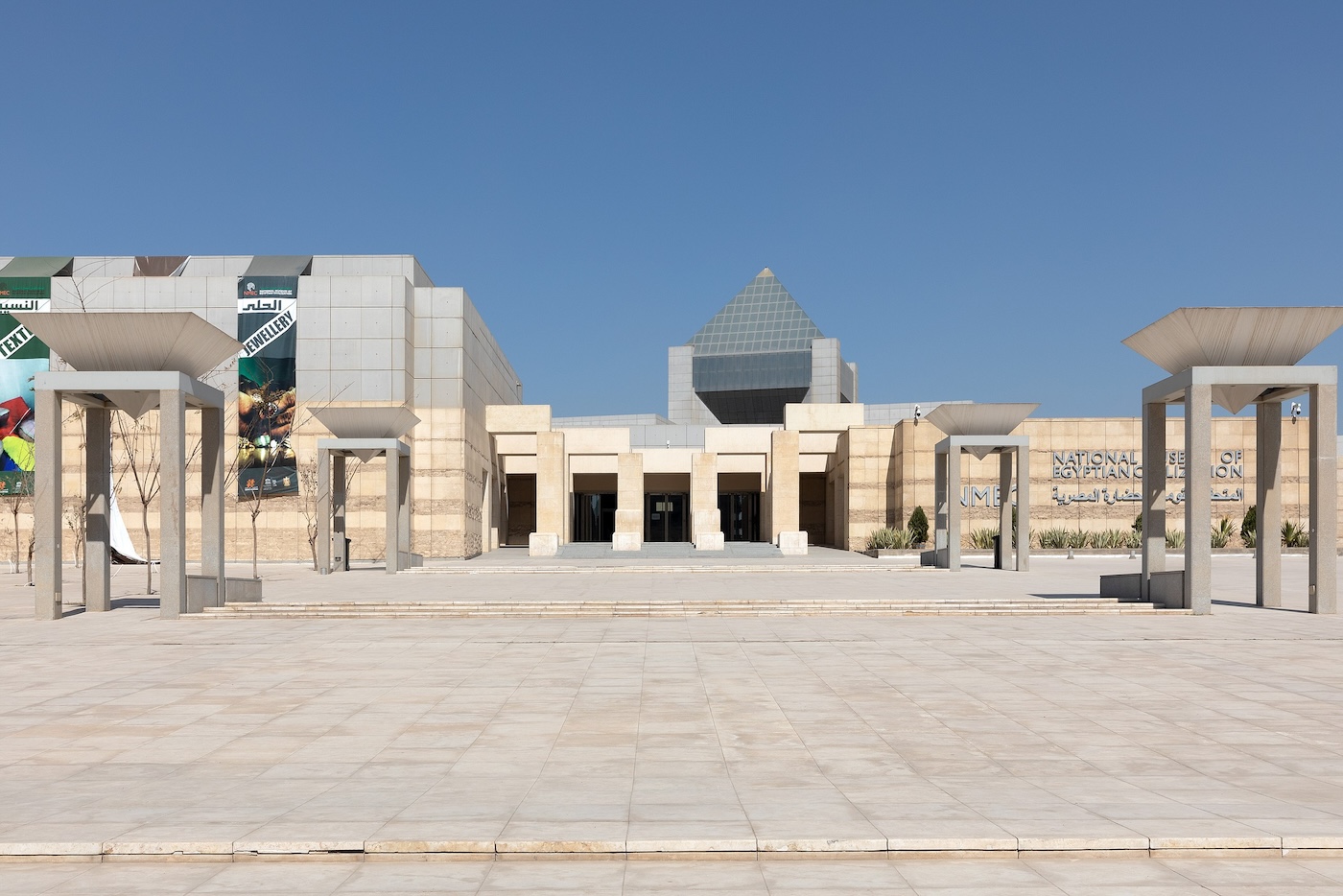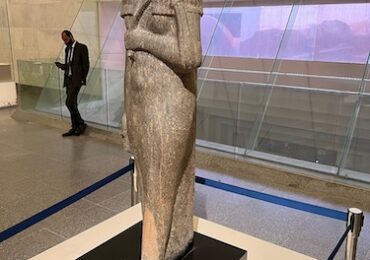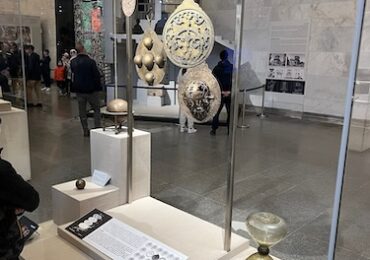
Egyptian Civilization Museum Journey into Egypt’s History
Egypt holds an allure that can’t be easily described, but a visit to the Egyptian Civilization Museum brings you as close as possible to understanding its essence. Tucked away in the heart of Cairo, the Egyptian Museum of Civilization is more than just a collection of artifacts; it’s a bridge connecting the past with the present. Standing before treasures from pharaonic dynasties, and catching glimpses of long-lost customs, visitors are whisked away on a journey through millennia of human experience—a journey that resonates deep within.
Unlike other museums that are often cluttered with unorganized displays, the Egyptian Civilization Museum feels like a story unfolding, gallery by gallery. Each room draws you in with its curated collection of relics, giving you a chance to savor ancient Egyptian life without feeling overwhelmed. Among the many items on display, one can’t help but be drawn to the Royal Mummies Hall. It’s not just about looking at a relic encased in glass—it’s about feeling the weight of history as you stand mere feet away from the likes of Ramses II or Queen Hatshepsut. The room carries a sense of reverence, like walking through a gateway to Egypt’s majestic past.
The Essence of the Civilization Museum Cairo
What makes the Civilization Museum Cairo such a unique experience? It’s not merely the vast collection of artifacts or even the immaculately displayed royal mummies. The museum itself is designed to immerse you in the very spirit of Egypt. Picture this: you’re standing in a dimly lit room, feeling the chill from a nearby exhibit. Before you stands a sarcophagus, carved meticulously thousands of years ago, preserved against all odds. To your left, you see tools—simple yet ingenious—used in daily life by people whose civilization thrived while much of the world was still in infancy.
More than just a museum, this place tells stories. Stories of kings and queens, priests and farmers. The exhibits are filled with artifacts that unravel narratives of the past—ceramics from the time of the pharaohs, papyrus scrolls detailing agricultural yields, and statues so lifelike that they seem ready to step off their plinths. And it’s not just the majesty of the Royal Mummies Hall; the whole museum feels like a chronicle of resilience, ingenuity, and culture.
Why the Egyptian Museum of Civilization Is a Must-Visit
So, is the Egyptian Civilization Museum worth visiting? Oh, absolutely. Whether you’re a lover of history or simply someone with a curious spirit, this museum has something to offer everyone. Its galleries are thoughtfully organized, allowing you to travel in time from prehistoric Egypt through to the Greco-Roman period. The museum highlights not just the rulers, but the ordinary people whose work and dedication built the legacy we marvel at today. And the Royal Mummies Hall stands out as an experience you just shouldn’t miss—a unique opportunity to look into the very faces of history. It’s an experience that can’t help but leave a mark.
In the Royal Mummies Hall, you’re face to face with legends. This room, hushed and steeped in awe, allows a glimpse into the lives and deaths of the most powerful rulers of ancient Egypt. Ramses II, whose military exploits are legendary, rests here in stillness. Queen Hatshepsut, who ruled as a pharaoh and led with remarkable strength, lies within arm’s reach—a testament to resilience and ambition. The Hall’s carefully controlled environment protects these ancient remains, but it also serves to remind us of their humanity. You can almost feel the heartbeat of history when you stand in that room.
Capturing Moments Inside the Museum
Visitors often ask, “Can you take pictures inside the Egyptian Museum?” The answer is yes, but with a caveat—photography is allowed, but flashes are strictly prohibited. The artifacts are delicate, and even the brief, intense light of a flash can cause damage over time. The museum encourages visitors to capture their experience, but also to remain mindful and respectful of these precious relics. After all, you’re not just taking pictures of artifacts; you’re capturing moments that have survived through the ages.
Imagine standing in front of a perfectly preserved sarcophagus, the hieroglyphs as sharp today as they were thousands of years ago, snapping a photo to take a bit of that memory home with you. The no-flash policy might seem like a small sacrifice, but it’s a way of preserving the fragile balance of history—to ensure future generations can enjoy these marvels too. The Egyptian Museum of Civilization makes it clear: here, respect for the past and care for preservation are key.
Highlights You Should Not Miss
When wandering through the halls of the Egyptian Civilization Museum, there are certain treasures you simply must not overlook. The Royal Mummies Hall, of course, is an absolute highlight. But beyond the mummies, there are the exquisitely decorated funerary objects, which paint a picture of the beliefs the ancient Egyptians held about life, death, and the afterlife. The ancient musical instruments, remnants of songs long forgotten, offer an intimate peek into the cultural life of one of history’s greatest civilizations. And let’s not forget the elaborate jewelry, the glimmer of gold and precious stones still sparkling after thousands of years.
Another unmissable highlight is the section dedicated to ancient crafts and industries. Here, you see how the Egyptians weren’t just builders of monumental pyramids but were also pioneers in crafting pottery, weaving textiles, and developing tools. These items might lack the grandiosity of golden masks or royal mummies, but they are no less important in understanding the ingenuity that underpinned Egyptian society. Each object, no matter how simple, tells a story about everyday life—from baking bread to brewing beer, to adorning their homes and temples. These displays show not only what ancient Egyptians made, but also how they thought, felt, and lived.
Unique Aspects of the Egyptian Museum
You might wonder what sets the Egyptian Museum apart from other museums around the world. Well, for starters, it is home to some of the most iconic artifacts of ancient Egypt—from the glittering treasures of Tutankhamun to the imposing statues of Amenhotep III. But beyond its collection, what makes it truly special is the way it connects visitors to an unbroken thread of history. There’s a tangible link that one feels when walking through its halls—as if you could reach out and touch the past.
The Egyptian Museum of Civilization also stands out because it brings more than opulence to the forefront. It offers context—showing how each piece fits into the broader tapestry of Egyptian society. Yes, you see the gold, the jewelry, the symbols of royal power. But you also see pottery, tools, and toys, humanizing the people behind these ancient artifacts. It gives a window not only into the lives of the elite but also into the everyday experiences of common Egyptians, showing that the greatness of Egypt was built on the efforts of all its people.
In conclusion, a visit to the Egyptian Civilization Museum is much more than just sightseeing. It’s about stepping into a narrative that began thousands of years ago and has been carried through generations. With its awe-inspiring Royal Mummies Hall, its thoughtfully curated galleries, and the wealth of history on display, this museum is an experience worth savoring. It’s not merely about what you see, but about the stories you carry with you long after you’ve left—a reminder of the enduring legacy of one of humanity’s greatest civilizations.



